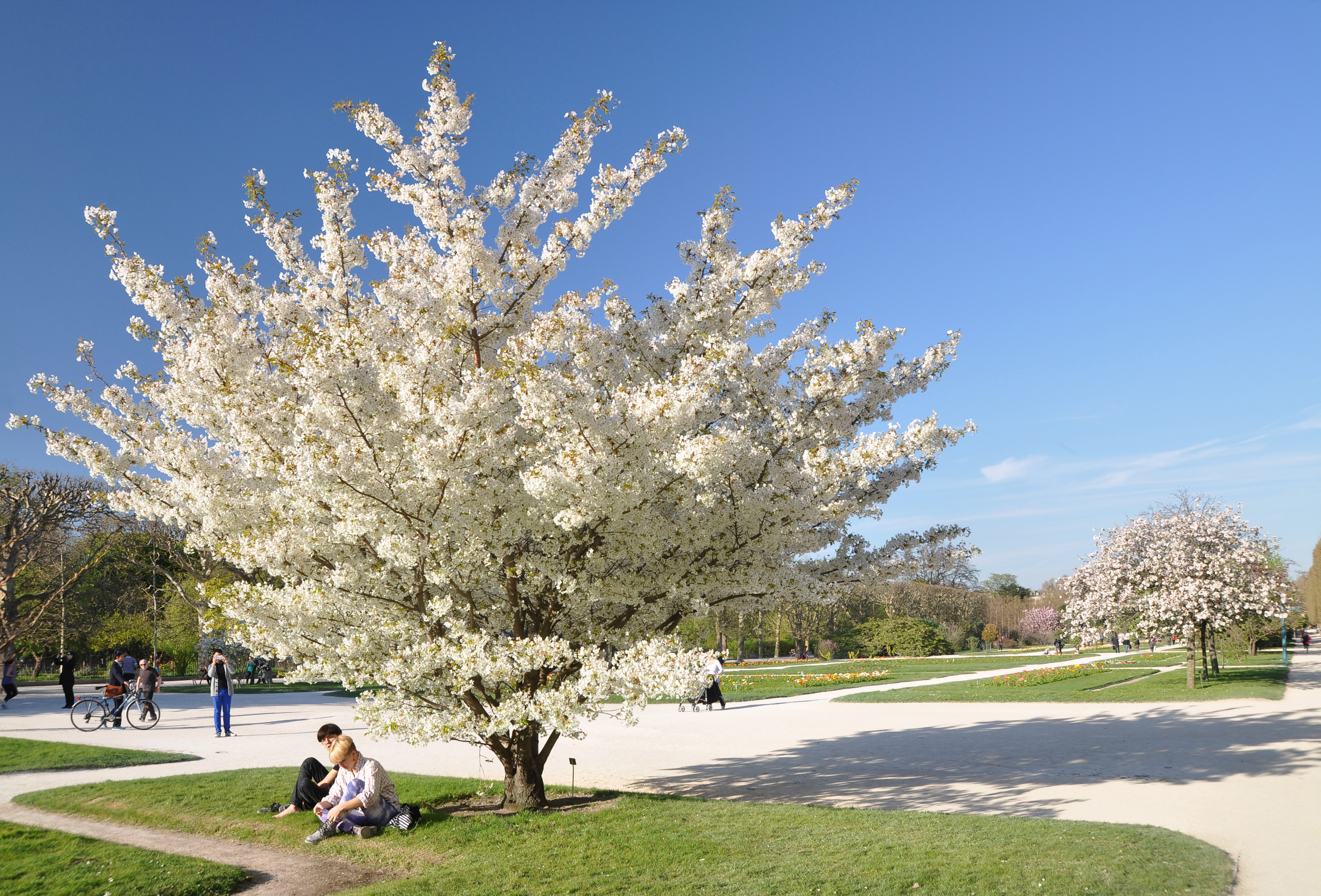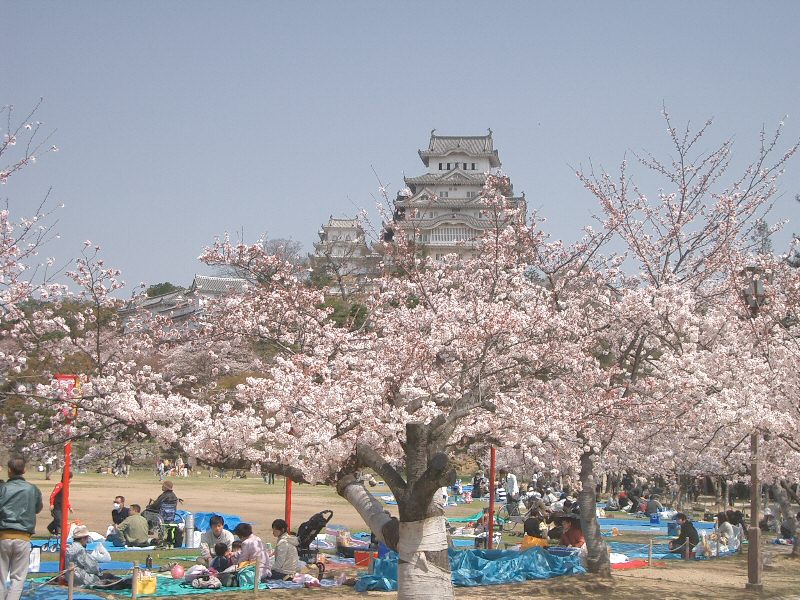|
Rock-Breaking Cherry Tree
The ancient Rock-Splitting Cherry Tree in 2005 The is an approximately 400-year-old cherry tree growing out of a crack in a granite boulder. It is located in front of the district courthouse in Morioka, the capital of Iwate Prefecture in the Tōhoku region of northern Japan. The tree measures 4.3 meters around the base, and is approximately 10 meters in height. It was proclaimed a Natural Treasure of Japan in 1923. References External links See also *Hanami is the Japanese traditional custom of enjoying the transient beauty of flowers; in this case almost always mean those of the or, less frequently, trees. From the end of March to early May, cherry trees bloom all over Japan, and around the s ... Tourist attractions in Iwate Prefecture Cherry blossom Individual trees in Japan Morioka, Iwate {{Tree-stub ... [...More Info...] [...Related Items...] OR: [Wikipedia] [Google] [Baidu] |
Kirschbaum Und Grosser Stein 2
{{surname
German-language surnames
Surnames of Jewish origin ...
Kirschbaum is the German surname literally meaning "cherry tree". It may refer to: * Bill Kirschbaum (1902–1953), U.S. Olympic swimmer *Carl Ludwig Kirschbaum (1812–1880), German entomologist, professor of biology, and museum director * Charlotte von Kirschbaum (1899–1975), German theologian * Eliezer Simon Kirschbaum (1797–1860), Austrian physician and writer *Thorsten Kirschbaum (born 1987), German football player *Walter Kirschbaum ( mid-20th century), West German slalom canoer See also * Kirschenbaum * Kirshbaum Kirshbaum is a Jewish surname derived from the German word literally meaning "cherry tree". Notable people with the surname include: * Howard Kirshbaum Howard M. Kirshbaum (born September 19, 1938) was an associate justice of the Colorado Supre ... [...More Info...] [...Related Items...] OR: [Wikipedia] [Google] [Baidu] |
Sakura
The cherry blossom, or sakura, is the flower of trees in ''Prunus'' subgenus '' Cerasus''. ''Sakura'' usually refers to flowers of ornamental cherry trees, such as cultivars of ''Prunus serrulata'', not trees grown for their fruit (although these also have blossoms). Cherry blossoms have been described as having a vanilla-like smell, which is mainly attributed to coumarin. Wild species of cherry tree are widely distributed, mainly in the Northern Hemisphere. They are common in East Asia, especially in Japan, where they have been cultivated, producing many varieties. Most of the ornamental cherry trees planted in parks and other places for viewing are cultivars developed for ornamental purposes from various wild species. In order to create a cultivar suitable for viewing, a wild species with characteristics suitable for viewing is needed. ''Prunus speciosa'' (Oshima cherry), which is endemic to Japan, produces many large flowers, is fragrant, easily mutates into double fl ... [...More Info...] [...Related Items...] OR: [Wikipedia] [Google] [Baidu] |
Granite
Granite ( ) is a coarse-grained (phanerite, phaneritic) intrusive rock, intrusive igneous rock composed mostly of quartz, alkali feldspar, and plagioclase. It forms from magma with a high content of silica and alkali metal oxides that slowly cools and solidifies underground. It is common in the continental crust of Earth, where it is found in igneous intrusions. These range in size from dike (geology), dikes only a few centimeters across to batholiths exposed over hundreds of square kilometers. Granite is typical of a larger family of ''granitic rocks'', or ''granitoids'', that are composed mostly of coarse-grained quartz and feldspars in varying proportions. These rocks are classified by the relative percentages of quartz, alkali feldspar, and plagioclase (the QAPF diagram, QAPF classification), with true granite representing granitic rocks rich in quartz and alkali feldspar. Most granitic rocks also contain mica or amphibole minerals, though a few (known as leucogranites) conta ... [...More Info...] [...Related Items...] OR: [Wikipedia] [Google] [Baidu] |
Morioka
is the capital Cities of Japan, city of Iwate Prefecture located in the Tōhoku region of northern Japan. On 1 August 2023, the city had an estimated population of 283,981 in 132,719 households, and a population density of . The total area of the city is . Geography Morioka is located in the in central Iwate Prefecture, at the confluence of three rivers, the Kitakami River, Kitakami, the Shizukuishi River, Shizukuishi and the Nakatsu River, Nakatsu. The Kitakami River is the second largest river on the Pacific side of Japan (after the Tone River) and the longest in the Tōhoku region. It runs through the city from north to south and has a number of dams within the city boundaries, including the Shijūshida Dam and Gandō Dam. An active volcano, Mount Iwate, dominates the view to the northwest of the city. Mount Himekami is to the north and Mount Hayachine can sometimes be seen to the southeast. Surrounding municipalities Iwate Prefecture *Hachimantai, Iwate, Hachimantai *Hanam ... [...More Info...] [...Related Items...] OR: [Wikipedia] [Google] [Baidu] |
Iwate Prefecture
is a Prefectures of Japan, prefecture of Japan located in the Tōhoku region of Honshu. It is the second-largest Japanese prefecture (behind Hokkaido) at , with a population of 1,165,886 (as of July 1, 2023). Iwate Prefecture borders Aomori Prefecture to the north, Akita Prefecture to the west, and Miyagi Prefecture to the south. Morioka is the capital and largest city of Iwate Prefecture; other major cities include Ichinoseki, Iwate, Ichinoseki, Ōshū, Iwate, Ōshū, and Hanamaki, Iwate, Hanamaki. Located on Japan's Pacific Ocean coast, Iwate Prefecture features the easternmost point of Honshu at Cape Todo, and shares the highest peaks of the Ōu Mountains—the longest mountain range in Japan—at the border with Akita Prefecture. Iwate Prefecture is home to famous attractions such as Morioka Castle, the Buddhist temples of Hiraizumi, Iwate, Hiraizumi including Chūson-ji and Mōtsū-ji, the Fujiwara no Sato movie lot and theme park in Ōshū, and the Tenshochi park in Kitaka ... [...More Info...] [...Related Items...] OR: [Wikipedia] [Google] [Baidu] |
Tōhoku Region
The , Northeast region, , or consists of the northeastern portion of Honshu, the largest island of Japan. This traditional region consists of six prefectures (): Akita, Aomori, Fukushima, Iwate, Miyagi, and Yamagata. Tōhoku retains a reputation as a remote, scenic region with a harsh climate. In the 20th century, tourism became a major industry in the Tōhoku region. History Ancient and classical period In mythological times, the area was known as Azuma (, ) and corresponded to the area of Honshu occupied by the native Emishi and Ainu. The area was historically the Dewa and the Michinoku regions, a term first recorded in (654). There is some variation in modern usage of the term "Michinoku". Tōhoku's initial historical settlement occurred between the seventh and ninth centuries, well after Japanese civilization and culture had become firmly established in central and southwestern Japan. The last stronghold of the indigenous Emishi on Honshu and the site of ... [...More Info...] [...Related Items...] OR: [Wikipedia] [Google] [Baidu] |
Monuments Of Japan
is a collective term used by the Japanese government's Law for the Protection of Cultural Properties to denote Cultural Properties of JapanIn this article, capitals indicate an official designation as opposed to a simple definition, e.g "Cultural Properties" as opposed to "cultural properties". as historic locations such as shell mounds, ancient tombs, sites of palaces, sites of forts or castles, monumental dwelling houses and other sites of high historical or scientific value; gardens, bridges, gorges, mountains, and other places of great scenic beauty; and natural features such as animals, plants, and geological or mineral formations of high scientific value. Designated monuments of Japan The government ''designates'' (as opposed to '' registers'') "significant" items of this kind as Cultural Properties (文化財 ''bunkazai'') and classifies them in one of three categories: * * , * . Items of particularly high significance may receive a higher classification as: * * * ... [...More Info...] [...Related Items...] OR: [Wikipedia] [Google] [Baidu] |
Hanami
is the Japanese traditional custom of enjoying the transient beauty of flowers; in this case almost always mean those of the or, less frequently, trees. From the end of March to early May, cherry trees bloom all over Japan, and around the second week of January on the island of Okinawa. The is announced each year by the Japan Meteorological Agency and watched carefully by those planning ''hanami,'' as the blossoms only last a week or two. In modern-day Japan, ''hanami'' mostly consists of having an outdoor party beneath the sakura during daytime or at night. In some contexts the Sino-Japanese term is used instead, particularly for festivals. ''Hanami'' at night is called . In many places such as Ueno Park temporary paper lanterns are hung for the purpose of ''yozakura''. On the island of Okinawa, decorative electric lanterns are hung in the trees for evening enjoyment, such as on the trees ascending Mt. Yae, near Motobu Town, or at the Nakijin Castle. A more ancient f ... [...More Info...] [...Related Items...] OR: [Wikipedia] [Google] [Baidu] |
Tourist Attractions In Iwate Prefecture
Tourism is travel for pleasure, and the commercial activity of providing and supporting such travel. UN Tourism defines tourism more generally, in terms which go "beyond the common perception of tourism as being limited to holiday activity only", as people "travelling to and staying in places outside their usual environment for not more than one consecutive year for leisure and not less than 24 hours, business and other purposes". Tourism can be domestic (within the traveller's own country) or international. International tourism has both incoming and outgoing implications on a country's balance of payments. Between the second half of 2008 and the end of 2009, tourism numbers declined due to a severe economic slowdown (see Great Recession) and the outbreak of the 2009 H1N1 influenza virus. These numbers, however, recovered until the COVID-19 pandemic put an abrupt end to the growth. The United Nations World Tourism Organization has estimated that global international tourist a ... [...More Info...] [...Related Items...] OR: [Wikipedia] [Google] [Baidu] |
Cherry Blossom
The cherry blossom, or sakura, is the flower of trees in ''Prunus'' subgenus '' Cerasus''. ''Sakura'' usually refers to flowers of ornamental cherry trees, such as cultivars of ''Prunus serrulata'', not trees grown for their fruit (although these also have blossoms). Cherry blossoms have been described as having a vanilla-like smell, which is mainly attributed to coumarin. Wild species of cherry tree are widely distributed, mainly in the Northern Hemisphere. They are common in East Asia, especially in Japan, where they have been cultivated, producing many varieties. Most of the ornamental cherry trees planted in parks and other places for viewing are cultivars developed for ornamental purposes from various wild species. In order to create a cultivar suitable for viewing, a wild species with characteristics suitable for viewing is needed. ''Prunus speciosa'' (Oshima cherry), which is endemic to Japan, produces many large flowers, is fragrant, easily mutates into double flo ... [...More Info...] [...Related Items...] OR: [Wikipedia] [Google] [Baidu] |
Individual Trees In Japan
An individual is one that exists as a distinct entity. Individuality (or self-hood) is the state or quality of living as an individual; particularly (in the case of humans) as a person unique from other people and possessing one's own needs or goals, rights and responsibilities. The concept of an individual features in many fields, including biology, law, and philosophy. Every individual contributes significantly to the growth of a civilization. Society is a multifaceted concept that is shaped and influenced by a wide range of different things, including human behaviors, attitudes, and ideas. The culture, morals, and beliefs of others as well as the general direction and trajectory of the society can all be influenced and shaped by an individual's activities. Etymology From the 15th century and earlier (and also today within the fields of statistics and metaphysics) ''individual'' meant " indivisible", typically describing any numerically singular thing, but sometimes meani ... [...More Info...] [...Related Items...] OR: [Wikipedia] [Google] [Baidu] |









